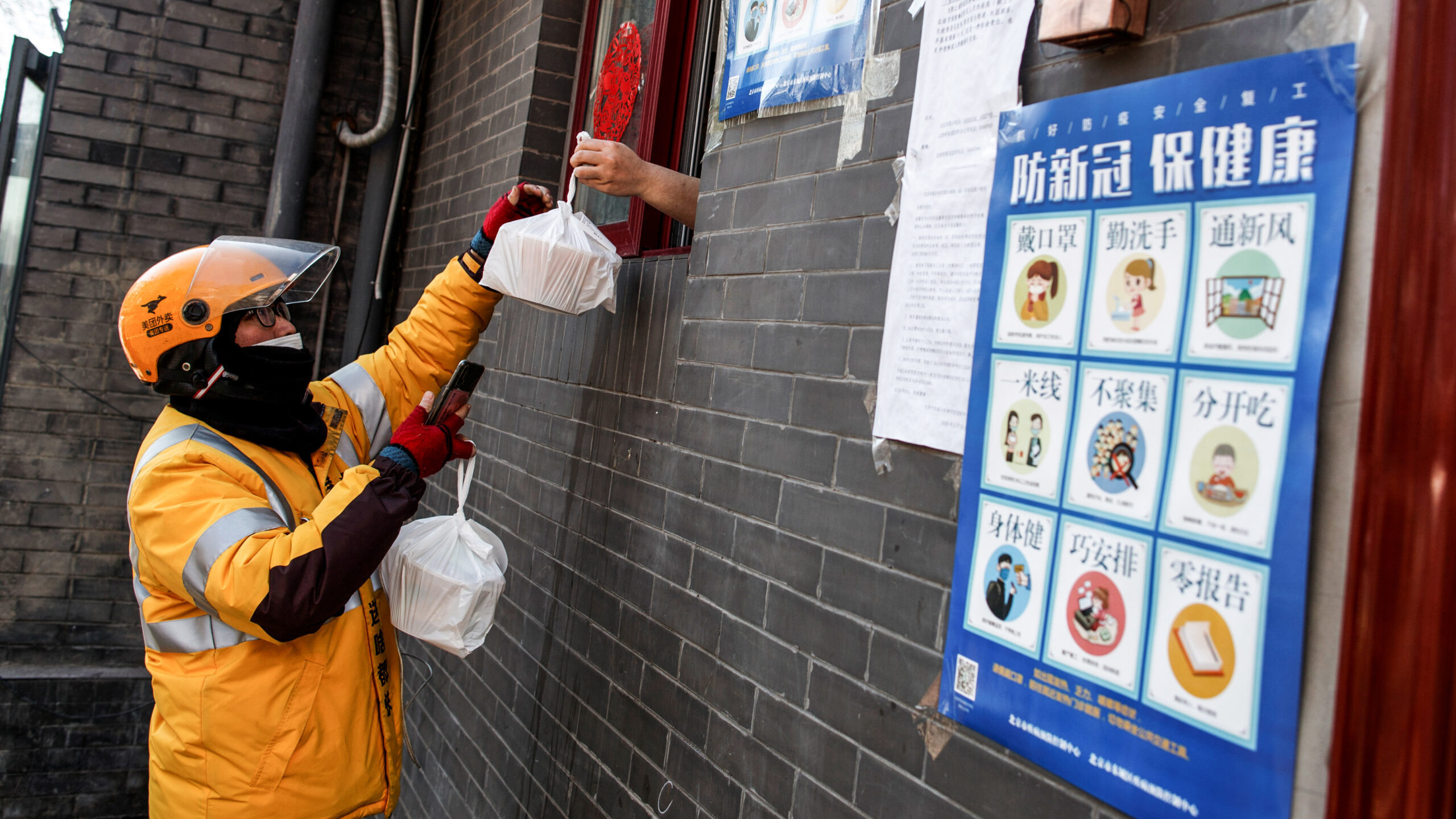China’s food delivery industry, once seen as a thriving source of income for millions of casual workers, is now revealing the cracks beneath its rapid expansion. As the world’s largest food delivery market, the sector is struggling to maintain its momentum amid a slowing economy, with drivers facing mounting pressure. Public outbursts, such as delivery riders smashing their phones in frustration or drivers being involved in heated confrontations with customers and police, have become alarmingly frequent. These incidents are just the tip of the iceberg in an industry that has been pushed to its limits.
The delivery industry, valued at over $200 billion, experienced a boom during the Covid-19 pandemic. As people were confined to their homes under strict lockdown measures, delivery services became a lifeline for communities. But now, the industry’s growth has plateaued, and for those at the bottom of the hierarchy—millions of delivery drivers—the challenges have become more daunting. The industry’s explosive expansion has slowed in the face of a series of economic setbacks. On Friday, China’s National Bureau of Statistics revealed that the country’s economic growth in the third quarter had slowed to 4.6%, slightly above projections but still an indication of deeper structural issues. Weak consumer spending and a protracted property crisis have contributed to a challenging environment, especially for workers who depend on commission-based income.
Jenny Chan, a sociology professor at the Polytechnic University of Hong Kong, emphasizes that delivery drivers are now caught in a bind. As delivery platforms tighten their operational costs to survive in a sluggish economy, workers bear the brunt of these austerity measures. Chan points out that drivers are working longer hours than ever before, but with fewer orders and smaller commissions, their earnings have diminished significantly. The dominance of platforms like Meituan and Ele.me has further exacerbated these issues, as drivers have limited bargaining power to negotiate better wages or working conditions.
Since the inception of China’s food delivery app Ele.me in 2009, the industry has ballooned to reach $214 billion in 2023. According to analysts, it is expected to grow even further, reaching $280 billion by 2030. Despite these impressive numbers, workers are increasingly strained by the demands placed upon them. One delivery driver, who was captured smashing his phone in frustration after receiving a negative review, said in an interview that the complaint was unwarranted. Yet, the platform penalized him by reducing his assignments, further cutting into his income.
The rise of these platforms has come with record profits for companies like Meituan, which reported $10 billion in revenue in 2023, a 26% increase from the previous year. Alibaba, the parent company of Ele.me, also reported substantial growth, with revenues from its local services division reaching $8.3 billion. But while the platforms flourish, drivers are facing a significant decline in earnings. In 2022, the average monthly income of a delivery driver was 6,803 yuan, or approximately $956, according to a report by the China New Employment Research Center. This figure represents a sharp decline from five years ago, when drivers earned nearly 1,000 yuan more per month. The decline in income has pushed many workers to extreme lengths, often compromising their safety in pursuit of faster deliveries and higher earnings.
The pressures on delivery drivers are compounded by a weak economy, with consumers opting for cheaper meals and fewer tips. Economist Gary Ng from Natixis explains that China’s slowing economy has led to “downgraded consumption,” where consumers are cutting back on discretionary spending, including food delivery. As a result, restaurants have had to lower their prices to attract more customers, directly affecting the commissions that drivers depend on. The situation is made worse by rising unemployment, particularly among young people, with the youth unemployment rate hitting 18.8% in August. This has led to fierce competition for the limited number of delivery jobs available.
In this competitive environment, delivery platforms hold significant power over their workers. Initially, these platforms offered attractive wages to draw in more drivers during their expansion phase, but now that they have established a near-monopoly, wages have been cut. Drivers are also subjected to algorithmic management, which dictates their routes and penalizes them for any delays or infractions, further reducing their autonomy and income.
The human cost of this pressure is increasingly evident. Videos of delivery drivers risking their lives to meet deadlines have flooded Chinese social media. Last month, in Hunan province, a delivery worker was killed in a road accident after running a red light in a desperate attempt to deliver food on time. In another tragic incident, a worker lost his life when a tree, felled by strong winds, collapsed on him as he sped through the streets trying to beat the clock. These tragedies underline the inherent dangers of a job that has become increasingly risky, as delivery drivers feel forced to take drastic measures to keep up with the demanding schedules imposed by the platforms.
For many workers, the sense of desperation is palpable. A delivery driver, Yang, who has worked in the industry for nearly seven years, shared that the situation has worsened drastically over time. “When I started, we could make decent money if we worked hard. Now, no matter how many hours we put in, it feels like we’re getting less and less in return.” Despite the declining wages, Yang continues to deliver food because he feels trapped. Other job opportunities, especially in the current economic climate, are scarce. His story is far from unique; many drivers echo the same frustrations about deteriorating pay and mounting risks.
Experts warn that unless there is a structural change in how delivery platforms operate, the plight of delivery workers will only worsen. While platforms rake in profits and expand their market share, the workers who keep the system running are left with little protection and even fewer rewards. Although there have been sporadic protests, the power dynamics between the platforms and their workers are highly imbalanced, leaving drivers with minimal leverage to demand better conditions or pay.
The Chinese government has acknowledged the challenges faced by delivery workers, and there have been discussions about implementing stronger labor protections, such as requiring platforms to provide insurance or ensuring fair wages. However, these initiatives are still in the early stages, and it remains to be seen whether they will have a meaningful impact on improving the lives of millions of delivery drivers across the country.
For now, delivery workers continue to navigate a precarious landscape, where the risks far outweigh the rewards. As the economy continues to slow, and as competition among platforms intensifies, the future for China’s delivery drivers looks increasingly uncertain.









